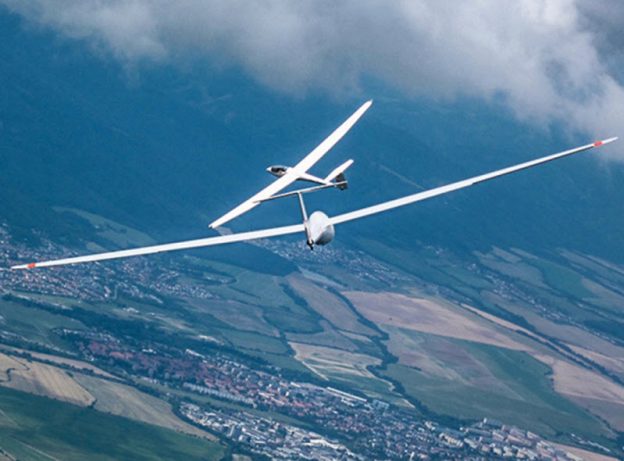
Thermals, those invisible pillars of rising air that we as glider pilots rely on for sustenance in the sky, they are a fascinating meteorological phenomenon for us all. Understanding how thermals develop is essential, for a good flight and how long one might stay in the sport! Let’s delve into the intricacies of thermal formation and explore the processes that give rise to these vital elements of flight.
Thermals owe their existence to the sun’s radiant energy, which warms the Earth’s surface unevenly throughout the day. As sunlight strikes the ground, different surfaces absorb and retain heat at varying rates. Dark surfaces such as asphalt or ploughed fields absorb more solar radiation and heat up quickly, creating localised areas of warm air near the surface. Conversely, lighter surfaces like sand or grass reflect more sunlight and retain less heat.
As the warm air near the surface expands, it becomes less dense than the surrounding cooler air. This buoyant air begins to rise, forming a thermal updraft. The process is akin to boiling a pot of water on a stove, where warmer water at the bottom rises while cooler water sinks to replace it. In the atmosphere, this vertical movement of air sets the stage for the development of thermals.
Topography also plays a crucial role in the formation of thermals. Mountainous terrain, for example, can enhance thermal development by acting as a natural barrier to airflow. As sunlight heats the slopes of mountains, pockets of warm air are generated, creating strong updrafts along the mountainsides. We as glider pilots often seek out these ridge thermals, to gain altitude, extend our flights & overall cross-country speed.
Additionally, wind patterns influence the behaviour and distribution of thermals. Light winds can allow thermals to form and persist over a given area, while stronger winds may disperse or distort a thermal structure. Convergence zones, where air masses of different temperatures and moisture content meet, can also trigger the formation of thermals as warm air is forced to rise along the boundary between the converging air masses.
The timing of thermal development is closely tied to diurnal cycles, with thermals typically becoming stronger and more abundant during the middle of the day, as solar heating reaches its peak. However, thermals can also form during the nighttime under certain conditions, such as when warm air trapped near the surface by an inversion layer begins to rise as the air above cools!
Once thermals break away from terra-firma, thermals can grow in size and strength as they ascend through the atmosphere. The rising air cools adiabatically with increasing altitude, causing moisture to condense and form clouds under the right conditions. Cumulus clouds, characterised by their fluffy appearance and cauliflower-like shape, often mark the presence of thermals in the sky, providing visual cues for us to locate and exploit.
The development of thermals is a dynamic interplay of solar heating, surface properties, topography, and atmospheric conditions. These rising columns of warm air not only sustain our flights but also contribute to the complex dynamics of weather systems. By understanding the processes behind thermal formation, we can gain insight into the intricate workings of the Earth’s atmosphere and the marvels of flight that it enables us to enjoy! Source: ‚Wings and Wheels‚.


